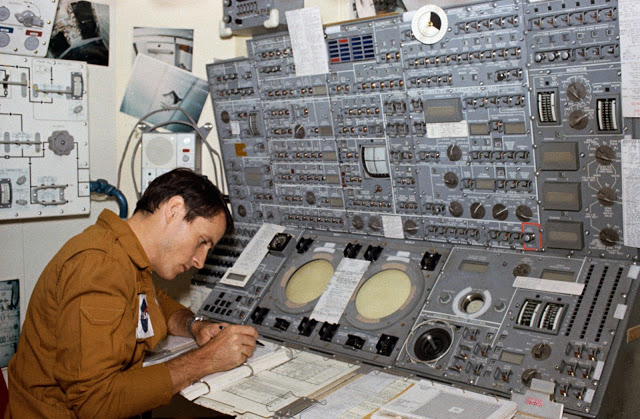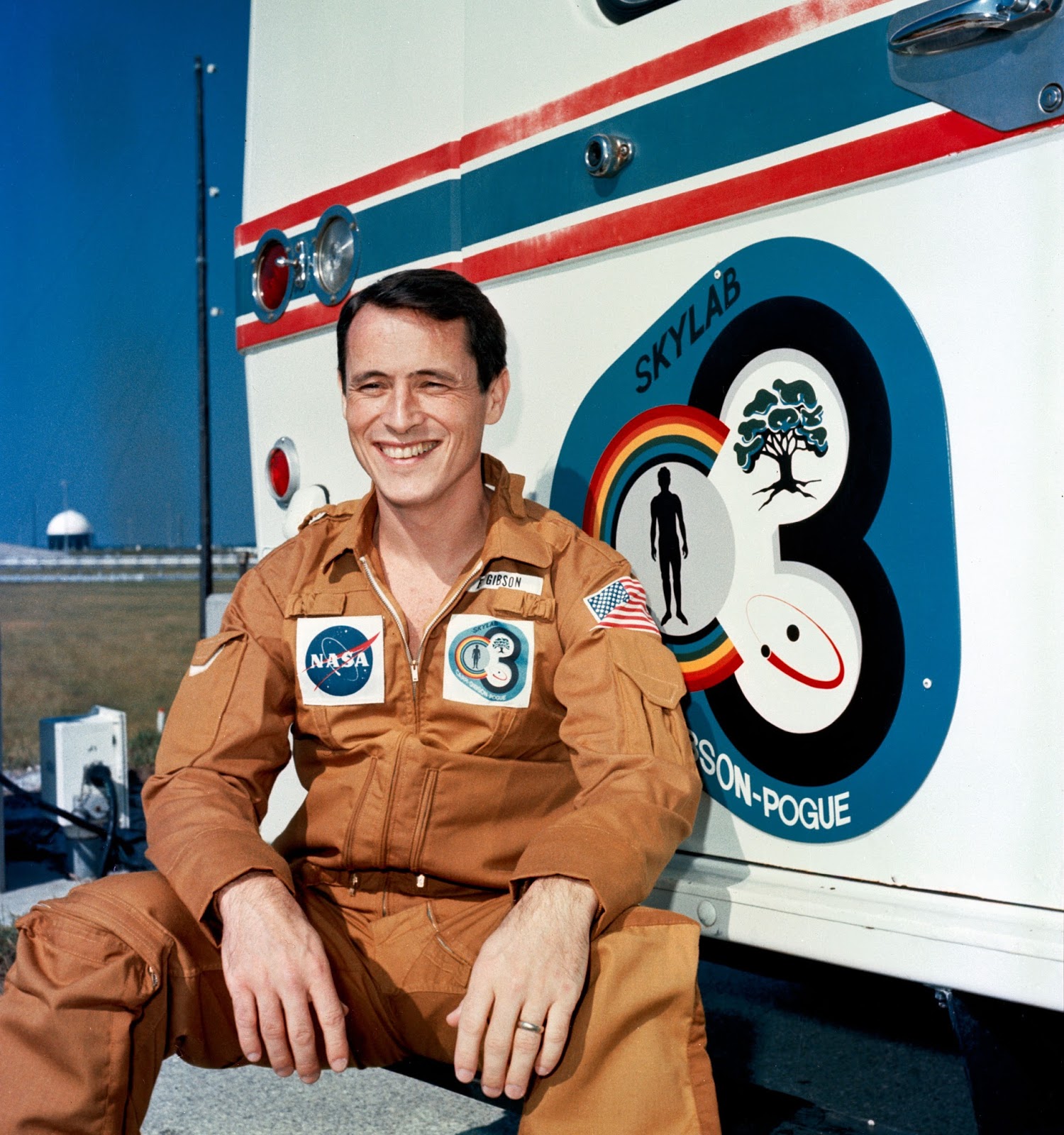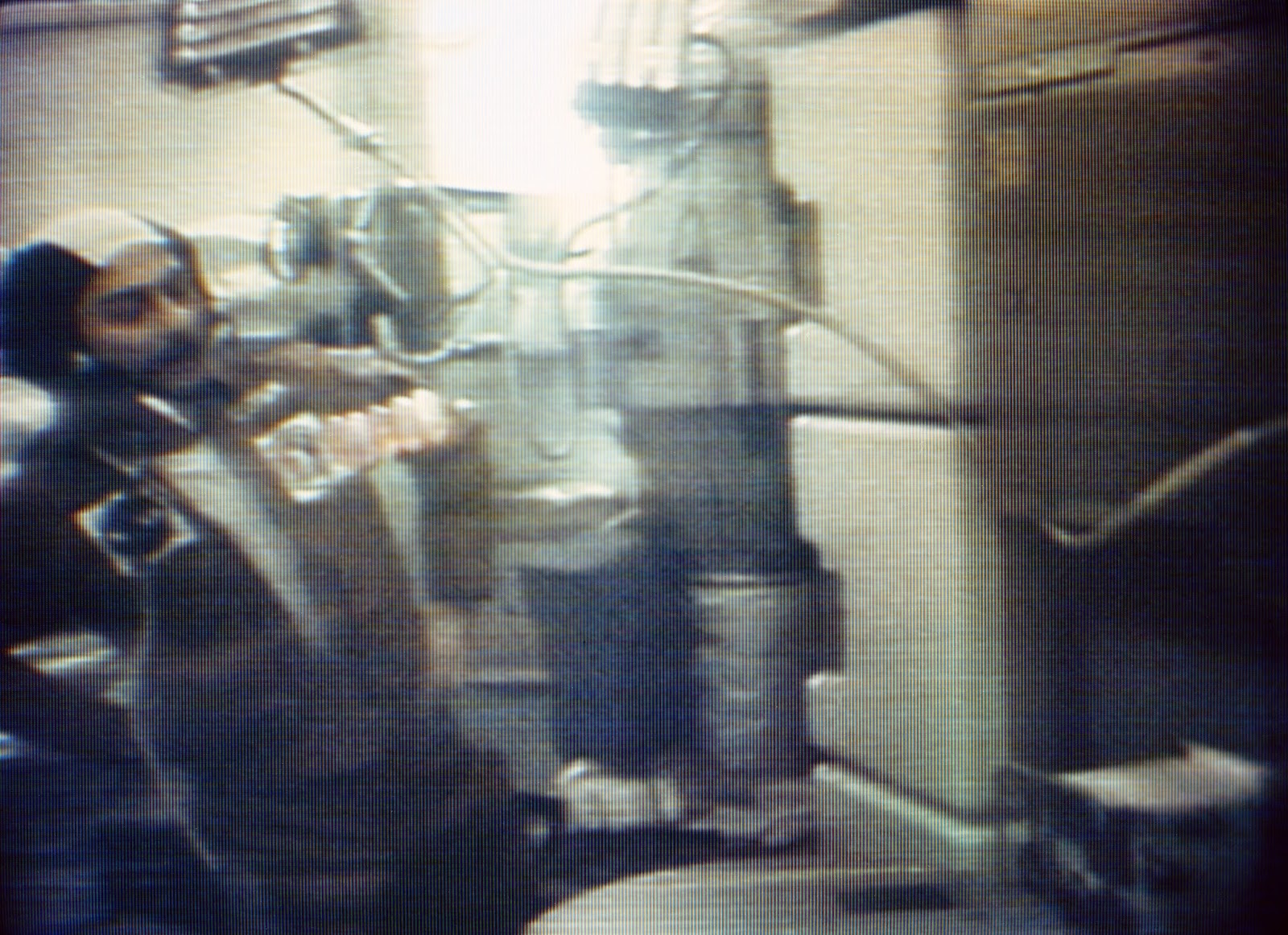A good friend sent over a copy of A House In Space, published in 1976 and written by Henry S.F. Cooper, Jr., with a caveat stating there were parts within it I probably wouldn’t like, and boy, he was right! My personal feelings aside, from a space history standpoint, this book is a total mess and I’m not sure how or why it was published. I guess I’ll start first with the few things I enjoyed about the book.
Things That Were Okay About A House In Space:
- The cover sure is pretty: The title/author font appears to be the 1970s-popular Avant Garde font, and there’s a nice picture of Skylab moving across the face of the Earth below the title.
- Nice pictures inside: There are nice pictures of the crews inside, and Lousma in the shower is not left out.
- Some of the quotes are nice and kind of moving: There are some nice, big words in the book that will thrill those who successfully completed Advanced Placement English Language in high school.
That’s Legit All I Liked About The Book, So Here’s Everything Wrong With It
I am a little shocked that a veteran spaceflight writer such as Cooper wrote this and allowed this to be published, because this book is marinated in wrongness, a lack of focus, and confusion from the very beginning. It leads off with a lovely quote from Dr. Ed Gibson, Skylab 4’s science pilot and resident solar physicist: “Oh, baby, when I was a little kid, I never dreamed anything like this could ever happen. I never dreamed it could happen to anybody, let alone me.” Wow, I thought, what a great, rich quote capturing the awe and wonder of becoming an astronaut. But wait, the book goes waydownhill shortly after that.
First, Cooper gets mired in this weird insistence that “some aerospace experts [Who???] said that strictly speaking, Skylab was not a space station.” For a book about America’s first jaunt into space stations and long-duration spaceflight, it possesses a very dim view of Skylab itself: “At the very least, Skylab was a prototype space station. It had been knocked together from old Apollo parts; indeed, NASA might have built a more advanced version if it had planned it from scratch instead of setting out to find a use for surplus Apollo hardware, which was how the project started.” Huh? While Skylab did employ “old Apollo parts,” it was not built simply as a receptacle to get rid of surplus hardware. At this point, I was on page 2, and thought Cooper had written this the weekend before the book was due on an Adderall binge. Christ! The general lack of focus also makes this a difficult read. It jumps around from mission to mission with little to no transitions, making this book a poor choice for those unfamiliar with Skylab.
But wait, it gets even worse! Cooper goes all in on the theory that the third crew had bungled up their mission; this book, along with a very flawed Harvard Business School report, probably contributed more to the incorrect “mutiny” myth than any other volume out there. Inexplicably, Cooper gets RAW about Gibson, for reasons that remain completely mysterious to me! For example: “Gibson, a slight astronaut with sharp features who was a civilian and a physicist, and who had a square jaw that apparently never stopped moving the whole time he was in space, was perhaps the contrariest, bitchingest astronaut that ever departed vertically from Cape Kennedy, and his two crewmates were in the same category.” What did Gibson (and Carr, and Pogue) ever do to Cooper to deserve this deranged sentence? For what it’s worth, Gibson apparently was “bitching” (Cooper’s word) about the maize-brown color of clothing aboard the ship. Cooper claimed that Gibson “had claimed a reputation as a natty dresser.” Every time I have seen Ed Gibson, he’s not wearing a tuxedo, so I’m not at all sure what Cooper is going on about.
The thing is, Gibson, Carr, and Pogue weren’t the first Skylabbers to have suggestions that could have been construed (or misconstrued) as “complaints.” The first two crews had lengthy debriefs after their missions filled with suggestions concerning things they’d like to see improved for the next crew(s). If Cooper had done his research, simply combing through the first two missions’ transcripts also would’ve turned up plenty of moments that could have been interpreted as “complaining.” For example, during the second mission, even sweet, apple-pie-cheeked Jack Lousma took issue with a piece of hardware aboard Skylab. According to Michael Collins’ 1988 book Liftoff: The Story of America’s Adventure in Space, “[Lousma] thought the wardroom table featured ‘the most miserable latch that’s ever been designed in the history of mankind or before.’” Even Collins conceded, “Cheerful as they were, the second crew did find things to grouse about.”
Perhaps the worst thing about A House In Space is how the book reduces Skylab’s nine astronauts to two-dimensional cardboard cutouts, and doesn’t portray them as actual human people. Pete Conrad is described as “a bald man with a gap between his front teeth.” Paul Weitz is described as “a muscular astronaut with a perpetual grin,” while Dr. Joe Kerwin is characterized as “reserved and thoughtful.” Kerwin is not so reserved in real life (Weitz was far quieter), so I’m wondering if Cooper had even met or so much as contacted the astronauts who’d flown aboard Skylab. Dr. Owen Garriott perhaps gets the worst treatment (other than, well, Gibson), and is reduced to being “a slight man with a precise, neatly trimmed mustache.” Literally the only thing the reader gathers about Garriott is that HE HAS A MUSTACHE.
But the BS doesn’t stop there: THERE IS NO LIST OF SOURCES AT THE END OF THE BOOK. I legit have no idea what or who Cooper consulted in the making of this book. If he had only gone to the NASA mission reports and transcripts (and had even cited them), this still would’ve sucked, because if he had actually consulted the crews, the backup crews, the support crews, and ground crews (really, almost anybody), this book may have had a chance to succeed, and he definitely would’ve gotten richer stories and quotes.
So anyway, that’s my review of A House In Space; I do want to add I am grateful my friend sent it, because I do love the photos in it. But if you want to read about Skylab, there are literally tons of other books that do the program justice, more so than this hot mess catastrophe. It’s a shame that one of the first mass market books about Skylab was so poorly executed, because the program and its astronauts deserved so much better.
P.S. This post’s title is kind of fraudulent, because I actually didn’t complete this book. I rage quit it close to its middle.
Emily Carney is a writer, space enthusiast, and creator of the This Space Available space blog, published since 2010. In January 2019, Emily’s This Space Available blog was incorporated into the National Space Society’s blog. The content of Emily’s blog can be accessed via the This Space Available blog category.
Note: The views expressed in This Space Available are those of the author and should not be considered as representing the positions or views of the National Space Society.





















